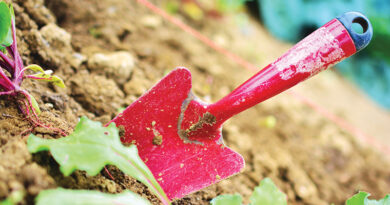How to Grow Mushrooms at Home
By Tania Moffat
Growing mushrooms is unlike growing any other vegetable. Fungi grow from spores rather than seeds. These spores are so tiny that you can’t see them with the naked eye. Perhaps, this is what scares off would-be mushroom cultivators, but growing mushrooms has never been easier. Today, kits are even available in some grocery stores.
The basics
Cremini, enoki, maitake, portobello, oyster, shiitake and white button are the most common mushroom varieties grown at home. All you need to do is pick your favourite, do a little research on them and buy your supplies. You will need to know what type of spawn (mycelium inoculated onto a growing medium) you should purchase, growing supplies and what your mushroom variety needs to succeed.
Mushroom growing kits are widely available and come with spawn and sometimes even a substrate to grow the spawn on. Kits are the easiest way to start if you’re a newbie and should provide you with all your how-to information.
 Shitaki mushrooms growing on sawdust and cereal log, on display at the 18th U.S. Department of Agriculture (USDA) summer farmers market’s final outdoor market of the season at the USDA Whitten Building east parking lot in Washington, D.C., on Friday, November 22, 2013. The Peoples Garden Initiative and USDA Executive Master Gardeners host several educational stations to help people learn about the agricultural beginning of every day products such as cotton thread, wheat flour, ground corn, soap, honey. Subject matter experts are also on hand to talk about how mushrooms are commercially grown in Pennsylvania caves. USDA photo by Lance Cheung.
Shitaki mushrooms growing on sawdust and cereal log, on display at the 18th U.S. Department of Agriculture (USDA) summer farmers market’s final outdoor market of the season at the USDA Whitten Building east parking lot in Washington, D.C., on Friday, November 22, 2013. The Peoples Garden Initiative and USDA Executive Master Gardeners host several educational stations to help people learn about the agricultural beginning of every day products such as cotton thread, wheat flour, ground corn, soap, honey. Subject matter experts are also on hand to talk about how mushrooms are commercially grown in Pennsylvania caves. USDA photo by Lance Cheung.
Alternatively, you can order spawn online or from a local retailer. Experts can make their own cultures and spawn, but this is a challenging endeavor which requires sterile conditions and specialty equipment.
Getting started
Mushroom spores rely on various growing mediums to develop into mycelium. When several mycelia join together they form a fungal culture which is then able to develop into a fruiting body or mushrooms. This growing medium once inoculated with mycelium is called mushroom spawn.
Spores rely on various substances such as sawdust, grain, wooden plugs, straw, wood chips or liquid for nourishment. Mushroom spawn is the combination of any of these ingredients with mushroom spores.
Spawn is then used to transfer mycelium onto a growing substrate. Mushrooms can be grown directly from the spawn, however, as it is generally not nutritionally dense, you will get fewer mushrooms.
Therefore, once the mycelium develops the spawn is applied to a second growing medium. These include substances like straw, cardboard, a log, wood chips, compost, nitrogen supplements among others.
The best way to select a growing medium is to match the mushroom species and the spawn with the substrate. Some types of mushrooms prefer certain growing mediums. Often spawns do better when they are paired with a substrate of a similar make up e.g., a wood chip spawn and a wood medium. This is where a little prior research can help.
Inoculation is easy, just spread the spawn over the growing medium. Spawn does have a best before date so purchase it when you plan to try growing. It generally lasts up to two months.
Matching a spawn to a growing medium
Sawdust spawn: logs, wood chip beds, cardboard, paper
Grain: pasteurized straw, nutritionally enriched sawdust
Wood dowel/plug: log, wood chips
Propagation and harvesting
Once combined you will need a dark, cool, moist and humid environment for them to grow. The basement or underneath a sink is a good location. You will need to carefully monitor the temperature and moisture daily for a couple of weeks; if it overheats or dries out the spores will die. Ideal growing temperatures are generally between 13 and 16 C; however, refer to the needs of the mushroom you are growing. Mist the medium until it is moist but not wet. If your basement is too warm in the summer, you can always try growing a winter crop.
Some people use manure for propagation, if you do use a 50/50 mix of manure and vermiculite as it will maintain moisture better. Do not spread it more than three inches in depth. Cover it with newspaper before misting.
Mushrooms are ready for harvesting when the caps open. Cut stalks with a sharp knife, this reduces the chance of pulling up newly developing mushrooms. Once mushrooms start producing you should be able to continue harvesting between one day and one week continuously for several weeks depending on the variety and provided you maintain their required growing conditions.
The most important thing to remember when growing fungi is that you must be able to control the growing environment – temperature, airflow, light and moisture. Share your photos with us if you try or have tried growing mushrooms at home.







